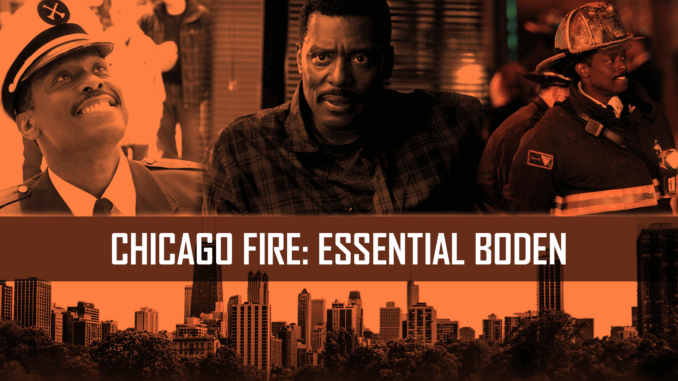
For over a decade, Chicago Fire has been lighting up screens and hearts around the world. Yet, despite a loyal fanbase and consistent ratings, critical recognition always seemed just out of reach. But after thirteen gripping seasons, this firefighter drama has finally earned the spotlight it truly deserves.
How did a show that’s been on air for so long stay under the radar of critics? And what shifted to elevate it into the realm of respected, award-worthy television? Let’s dive into the journey of Chicago Fire, from its humble beginnings to its well-earned critical acclaim.
The Early Years of Chicago Fire
When Chicago Fire first premiered, it was often seen as just another procedural drama—a genre flooded with similar shows. Early critics frequently labeled it as formulaic, but the show kept pulling in viewers who connected with its authentic portrayal of firefighting.
What Set Chicago Fire Apart From Other Procedurals?
Realism in Firehouse 51
Unlike many procedural dramas, Chicago Fire invests heavily in realism. The portrayal of firefighting techniques, emergency scenarios, and the emotional toll on firefighters is second to none. This authenticity made it a fan favorite, even if critics were slow to notice.
Deep Character Development
Chicago Fire is more than just action and emergencies. Over the years, the show has built complex, relatable characters, making viewers care deeply about their struggles and victories. This emotional depth set it apart from shallow procedural shows.
The Slow Climb to Critical Respect
Evolution in Storytelling
As the seasons progressed, Chicago Fire evolved beyond isolated “call-of-the-week” episodes into serialized storytelling. This shift allowed for richer narratives, character arcs, and meaningful themes that critics look for.
Tackling Real Social Issues
The series began addressing social issues head-on—mental health, PTSD, racism, and family dynamics—which gave it a new layer of relevance and depth, resonating with both audiences and critics.
The Role of Strong Performances
Standout Acting that Captivated Audiences
The talented ensemble cast—led by Eamonn Walker, Taylor Kinney, and others—brought heart and authenticity to every scene. As performances grew more nuanced over time, critics couldn’t ignore the caliber of acting on display.
Chemistry That Feels Real
The believable camaraderie among firefighters at Firehouse 51 isn’t just scripted; it’s palpable. This chemistry made viewers invested and added emotional weight, which finally gained critical attention.
The Impact of Long-Term Story Arcs
Payoff for Patient Viewers
Longtime fans were rewarded with story arcs that paid off in meaningful ways—loss, redemption, and personal growth that spanned multiple seasons. This narrative patience impressed critics who value sustained storytelling.
Balancing Action with Heart
While fire rescues and intense scenes grabbed attention, the show balanced these with heartfelt moments and character-driven drama, elevating it to more than just a spectacle.
Critical Acclaim: What Changed in Season 13?
Awards Buzz and Media Praise
Season 13 marked a turning point with an increase in award nominations and positive media reviews highlighting the show’s growth in storytelling, character depth, and social relevance.
Industry Recognition
Behind-the-scenes talent, including writers and directors, gained respect for crafting compelling episodes that challenge norms and showcase emotional storytelling.
Fan Influence on Critical Recognition
Vocal Fanbase Demanding Respect
Fans have been vocal on social media, championing the show and demanding critics give it the respect it’s earned. Their passion created a groundswell that couldn’t be ignored.
The Power of Streaming and Binge-Watching
With streaming platforms making all seasons accessible, new viewers and critics revisited the show, appreciating its growth and depth over time.
What the Future Holds for Chicago Fire
Continuing to Raise the Bar
With the critical spotlight shining bright, Chicago Fire is poised to push boundaries even further—whether through more daring storylines or deeper explorations of firefighter life.
Expanding the Franchise
The Chicago franchise continues to thrive with spin-offs like Chicago P.D. and Chicago Med, all benefiting from the flagship show’s critical success.
Lessons from Chicago Fire’s Journey
Consistency Pays Off
The show’s journey teaches us that persistence and steady improvement can eventually lead to recognition, no matter how long it takes.
Authenticity Wins Hearts
Authentic storytelling rooted in real-life experiences connects deeply with audiences and critics alike.
Why Chicago Fire Deserves Your Watch
If you haven’t caught up, now’s the perfect time. With layers of drama, heroism, and humanity, Chicago Fire offers a rich, rewarding experience beyond the typical procedural.
Conclusion
Thirteen seasons is a long journey for any show, but Chicago Fire’s eventual rise to critical acclaim is a testament to the power of perseverance, authentic storytelling, and deep character work. It reminds us that sometimes, the best things take time to be truly appreciated. Whether you’re a longtime fan or a newcomer, this series is worth every second of your attention.
FAQs
Q1: Why did it take Chicago Fire so long to get critical acclaim?
A1: The show initially focused more on action than deep storytelling. Over time, it evolved with complex narratives and social relevance, which critics began to appreciate.
Q2: What makes Chicago Fire stand out from other procedural dramas?
A2: Its authentic portrayal of firefighting, emotional depth, and strong character development set it apart.
Q3: Has Chicago Fire won any major awards?
A3: Yes, especially in recent seasons, it has received award nominations and industry praise.
Q4: Can new viewers jump in at Season 13?
A4: While you can enjoy the current season, starting from earlier seasons offers richer character context.
Q5: What social issues does Chicago Fire address?
A5: The show tackles mental health, PTSD, racism, and family dynamics, adding layers of realism.
